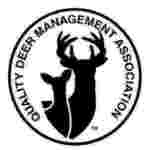
History of Deer Management on Mark Nordin Property
By Mark Nordin
I own 480 acres of hunting land in DMU 015 which is western Menominee County. Plainly said, This area is a deer hunting mecca. The habitat is ideal for deer. Historically, hunters, including myself, practiced "buck only" harvest policy. Our herd was known for it's extreme high deer numbers and skinny tined bucks. In the early '90s, I became concerned about forest regeneration. I was also seeing spotted fawns during the November gun season. I began talking with DNR personnel about these issues and what should be done about them. DNR wildlife biologist Tim Willman convinced me that our herd was over-populated and that we needed to shoot some does to reduce the herd. That coincided with more antlerless deer tags being made available in our DMU. This was 1995. We shot 19 does and 6 bucks. This was followed by the winter of 1995-6 which was extremely severe. Deer died all across the landscape. Although we lost a lot of deer, especially our fawn crop, deer numbers were still too high so we harvested 48 deer during the 1996 firearm deer season. We took 6 bucks and 42 antlerless deer.
Unfortunately I had not yet read James Kroll's "Producing & Harvesting Whitetail Deer" so I did not know the importance of record keeping. I regret having no records on our herd from those years. The herd was still big in 1997 so we harvested 57 deer during the archery and firearm seasons. Eight were bucks, 49 were antlerless deer. Our buck to doe ratio was 1 to 6. Our does dressed out around 100 lbs. The lactation rate of does 2.5 years old and older was 47%. Most of our bucks weren't very heavy either. For example, I shot a whopping 72 lb. spikehorn which I mistook for a doe. We imposed a "one buck" limit that year. We went into this past season with a 1 to 5 buck to doe ratio and a .4 to 1 fawn to doe ratio. We harvested 64 deer of which 58 were antlerless.
Most of our doe age classes actually were lighter this year compared with 1997. I ascribe this to a poor growing season coupled with the lactation demands of a large fawn crop. Our 5.5+ age class did gain an average of 7 lbs to 108 lbs. Lactation rates skyrocketed to 81% which is in the quality range. Still, 21% of our does were age 6.5+ so we have a ways to go. Our yearling buck dressed weights increased by 33% from 92 lbs to 122 lbs. Beam diameters were up 35%. I think our buck fawn dressed weights are the truest picture of the progress we are making. They were up 14% last year. I also look at browse utilization which is still close to 100%. We had a mandatory 3 doe rule on the property last year with point restriction on buck harvest. We'll keep shooting in 1999 as long as tags are available.
Outlook for the Future
The big problem in Michigan is the legal over-harvest of antlered bucks. The big picture is that there are 1,000,000 deer hunters in Michigan. Each one can purchase 2 buck tags. There are at most 400,000 to 500,000 antlered bucks to satisfy the demands of these hunters. The net result is that 60 to 90 percent of the available bucks are harvested each year leaving few that live long enough to become quality animals. Many UP deer hunters want to go back to the "one buck" limit. Unfortunately, that will not solve the problem. Even if the DNR only issues 1,000,000 tags, that is still too many. One solution is to go to a drawing for buck tags. Although politically unpopular, it will work to increase the number of antlered bucks in our deer herd. The classic case of a drawing resulting in increased numbers of game animals is the bear draw. In ten years we have gone from a position where bears were practically invisible to where they are now so abundant that they are causing problems. I should point out that there are six times as many deer per deer hunter as there are bear per bear hunter so drawing success rates for deer tags would be much higher than for bear tags. There are two other drawings which it would be useful to examine. Antlerless deer tag quotas are set by DMU with tags allocated between private land and general tags. Buck tags should be handled the same way. Also, in the elk draw, bull tags are drawn first, then unsuccessful applicants get first chance at cow tags. Buck tags should be drawn first. Hunters who do not receive a buck tag should then have first chance at a doe tag. The above represents some options for obtaining a quality deer herd.
Mark Nordin
Summary of Links